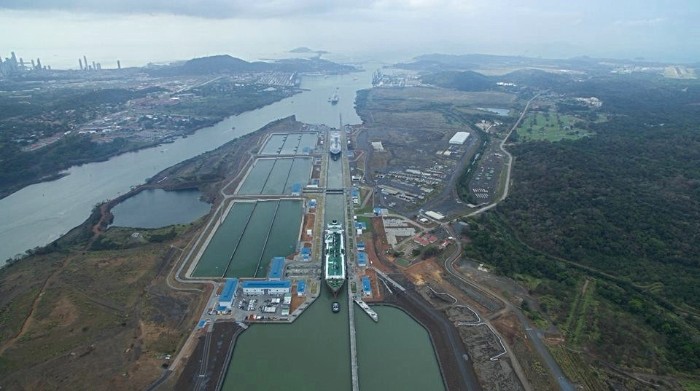The Panama Canal Authority has raised daily transits to ease wait times of up to more than a week for LNG tankers currently passing through without a reservation.
The delays observed in recent days for a small portion of vessels transiting the shortest route from the US Gulf Coast to East Asia are due to fog, higher-than-average arrivals and additional safety procedures to prevent further spread of the coronavirus, the canal operator told S&P Global Platts Oct. 29.
Market participants have reported wait times recently of six to eight days for northbound transits and four to six days for southbound transits. Across the month of October, the average transit time is 71 hours – slightly faster than last year — with some vessels making the journey through the Panama Canal in under 20 hours, Platts Analytics data showed.
The delays for some vessels come during a particularly bullish period for US LNG exporters.
Utilization at the six major US liquefactions terminals on the Gulf and Atlantic coasts rose Oct. 29 to a record 9.645 Bcf/d, slightly above the previous record of 9.629 Bcf/d set on March 31 before the worst of the market impacts from the pandemic set in. The Platts JKM, the benchmark price for spot-traded LNG delivered to Northeast Asia, has jumped almost fourfold from its historic low at $1.825/MMBtu on April 28, to $7.176/MMBtu on Oct. 29.
While some buyers of US LNG in the spring, when prices were low, slow steamed Gulf Coast shipments to East Asia by heading eastward toward Europe and Africa, the much higher end-user prices now in Asia make shorter voyages westward more preferable, especially with the Atlantic tanker day rate at $120,000, almost double the rate of $62,000 at the beginning of October.
In a statement to Platts, the Panama Canal Authority acknowledged the extended waiting time for vessels that have been arriving at the transit zone without a reservation in recent days. In response, the Canal Authority said it has adjusted its operations to raise daily transits to 37, reducing the backlog while maintaining the safety measures that have allowed the waterway to remain open without any pause in transits.
“Note that the waiting time increased only for vessels that arrived without a reservation, because vessels that book transits for a particular date continue to have transit certainty for that date,” the Canal Authority said. “This has been true for over 99% of transits historically and remains despite the pandemic.”
The operator said it expects the situation to be “short-term.”
“Nonetheless, the team is on standby and working directly with customers every day to accommodate their safe passage through the Panama Canal,” it said.
Cargo numbers
Forty LNG cargoes have transited the Panama Canal month-to-date through the morning of Oct. 29, averaging roughly 1.5 cargoes per day, a moderate increase over last year, according to cFlow, Platts’ trade flow software tool.
Amid the late October delays at the Panama Canal for some vessels, Platts data showed that six LNG tankers took over 200 hours to transit the canal. During the same month in 2019, Platts data show that only one cargo waited over 200 hours. Platts data also showed that 13 LNG cargoes transited the canal in 24 hours or less during October, whereas only three cargoes were able to achieve that during the same month last year.
As US LNG production continues to recover from a series of unplanned outages and hurricane disruptions, cargoes are likely to increasingly target Asia, with the JKM netback now indicating spreads over $2/MMBtu for prompt-month deliveries, which could increase demand for Panama Canal slots.
Stay Safe!!
